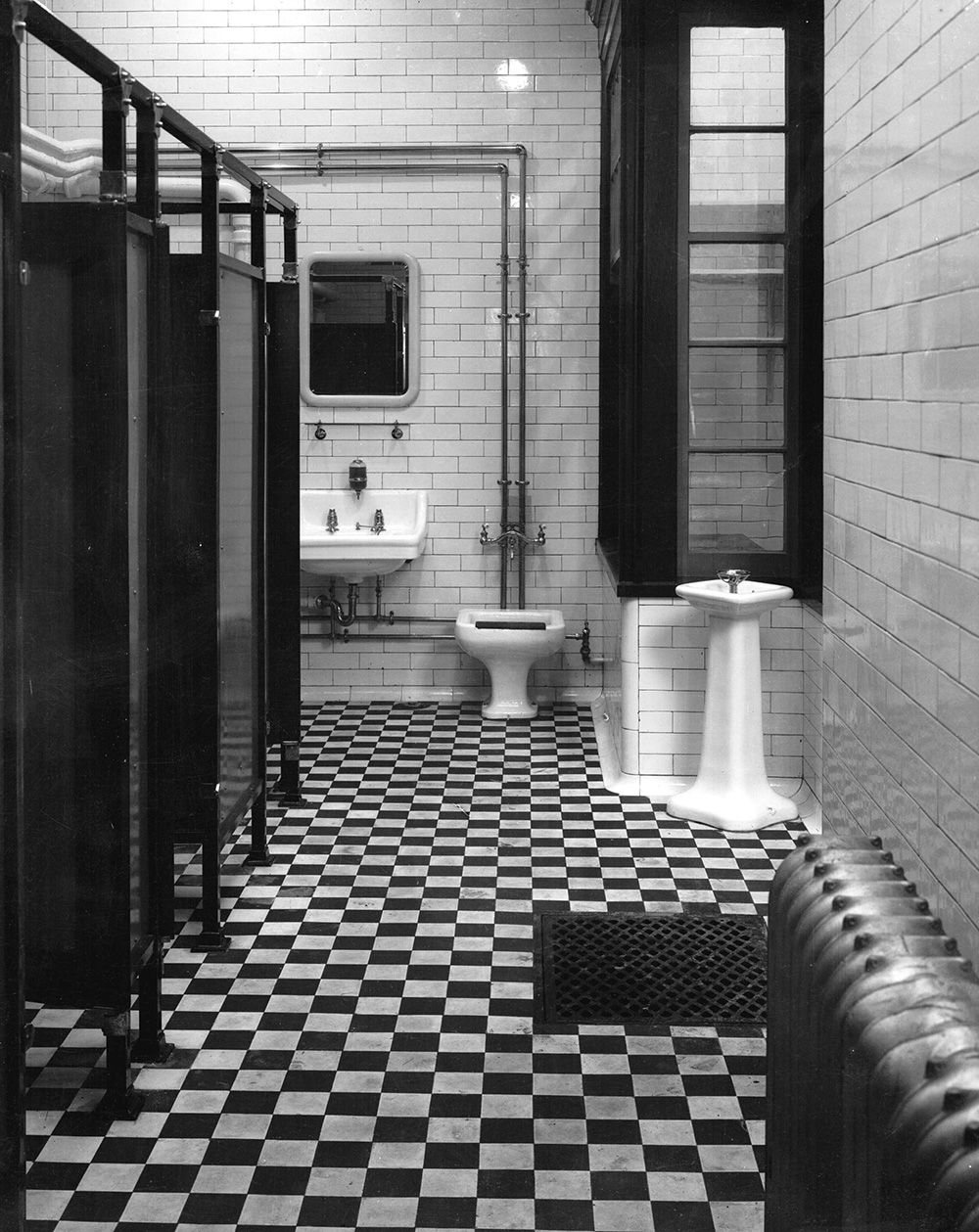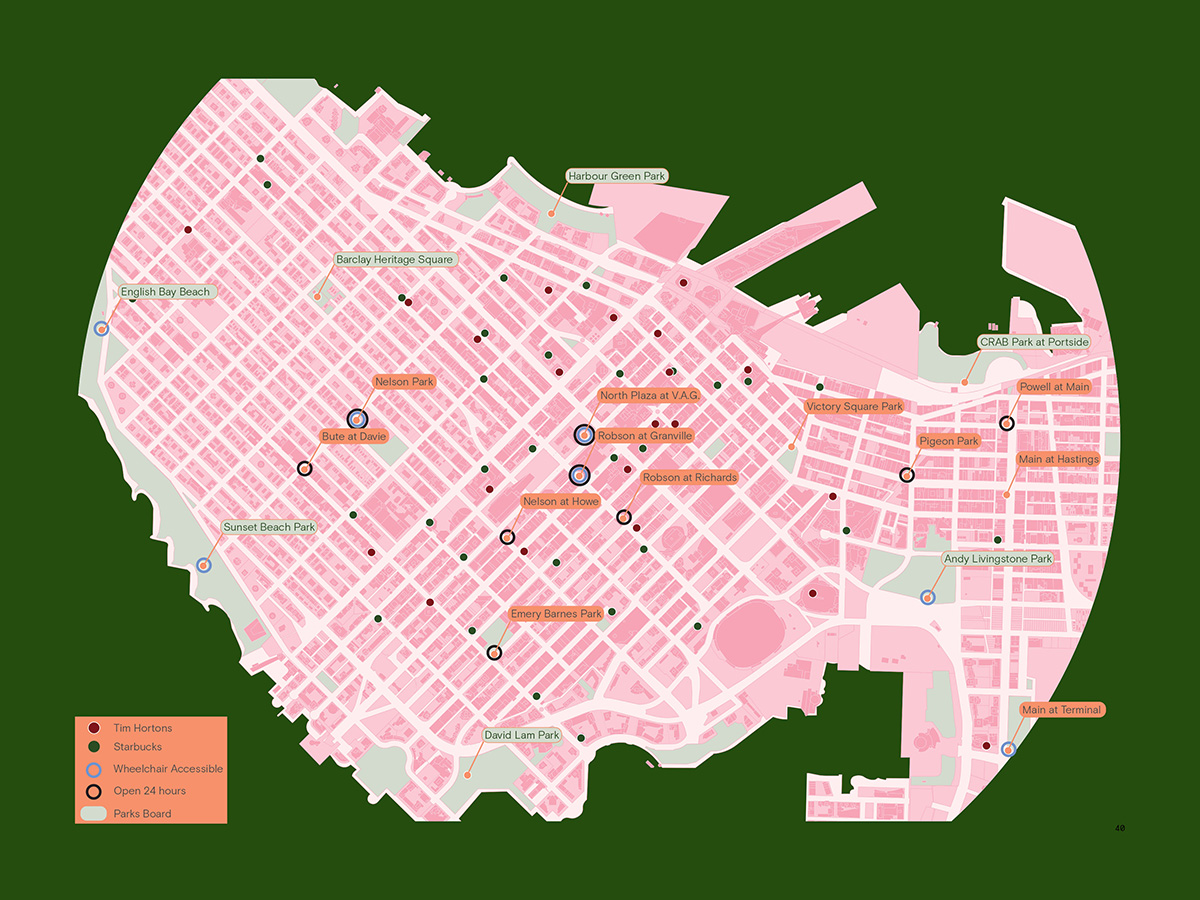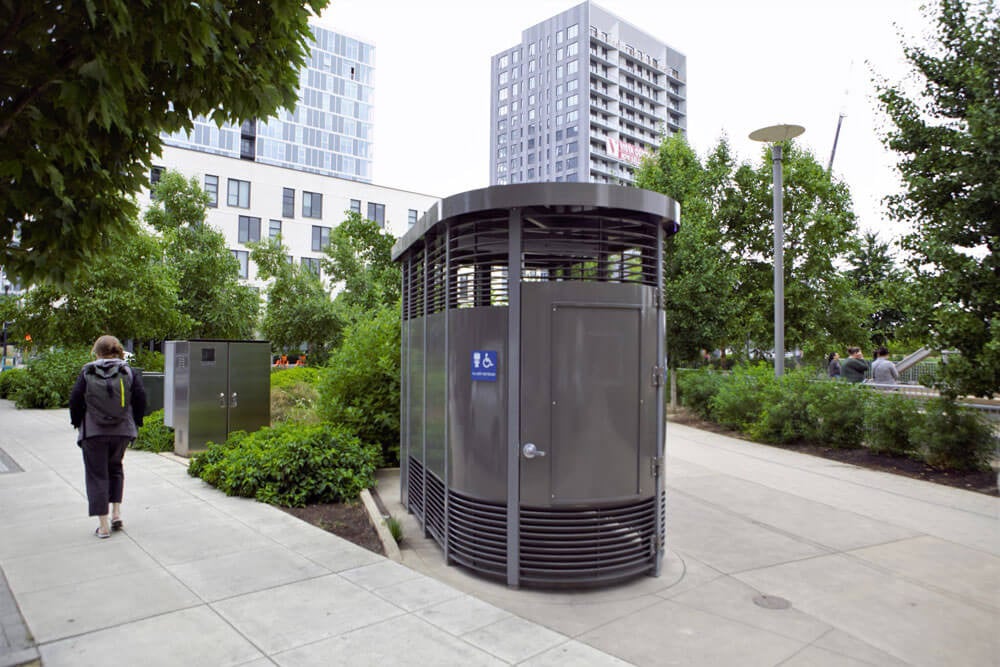Emily Scoular has a question: What’s the most intimate way you engage with your city’s architecture?
Her answer: when you go the washroom.
“A toilet comes out of the ground, and you touch it with your skin,” she said. “It provides one of those rare moments when we make a prolonged physical connection to the hardware of a building. It connects the body not only to a physical structure, but the infrastructure of facilities that the city is willing to provide, no matter who you are.”
Scoular, who recently graduated with a master’s in architecture at the University of British Columbia, argues that the banality of the subject means we don’t often consider public washrooms as the right they should be.
It’s something she started thinking about when she used the Victoria, B.C., toilet that in 2012 won an award for Canada’s Best Restroom.
That lauded loo is the Langley Street Loo, a stand-alone public washroom that’s free and accessible around the clock. Its stainless-steel design — sleek, easy to clean, and with enough open grating to balance public and private — hails from Portland and has been adopted by many North American cities.
The Langley Street Loo is one of a few creative designs that Victoria started installing in the 2000s to prevent a surge of people peeing around downtown at night.
“They’re really nice pieces,” Scoular said. “Until I moved to Vancouver, I took them for granted.”
In Vancouver she found that the lack of public washrooms, and the funding model behind the few that do exist, speaks to how toilets have been commoditized in much of North America.
That’s not true in older cities such as London, Paris or Tokyo that have robust public washroom strategies, including toilets conveniently off sidewalks with their own attendants.
So, Scoular decided to tackle the topic for her thesis. Arguments exist for the human right to shelter, food and water in the city — “but what happens after that?” she wondered.
“Washrooms are something everybody needs,” Scoular said one recent Thursday as she admired the wall of a Chinatown building that smelled of urine and featured a sign that read: “No public washroom.”
“It’s important when you live in a concrete city like this with a hard landscape that you have public washrooms, because there’s no kind of natural sewage disposal.”
If human waste isn’t disposed of properly, people could contract fecal-oral transmitted diseases, such as hepatitis A, and, on an infrastructural level, the waste could contaminate storm drainage.
In addition to physical health, washrooms are also important for social health. Scoular points to the ideas of feminist theologian Judith Plaskow, who wrote that “access to toilets is a prerequisite for full public participation and citizenship.”
That includes people of all ages and genders, parents with children, people with disabilities, homeless people and visitors unfamiliar with the city.
It was a commitment to physical and social health that drove the installation of Vancouver’s first public and inclusive washrooms.
Among the first challenges of city council after Vancouver’s founding in 1886 was the provision of washrooms. In those early years, men peed on storefronts and the urinals installed by the city in alleys and market sheds were poorly maintained and subject to frequent spitting.
Members of the Women’s New Era League in 1921, many of whom were suffragettes bolstered by winning the right to vote in B.C. in 1917, were the first to petition council for inclusive washrooms.
They were built the next year. Two are still in service today: under Victory Square, and under the Carnegie block at Main and Hastings streets.

These facilities helped Vancouver evolve from what was once a blue-collar, male-dominated frontier town full of saloons and brothels to a real metropolis.
In her thesis, Scoular questions the failure to provide adequate washrooms today in places around Metro Vancouver where they’re needed.
Why is there no washroom at Vancouver’s busy Waterfront station, unless you buy something from Subway?
Why do West Coast Express train cars have washrooms while SkyTrain stations don’t, despite also carrying passengers long distances between cities?
Why does the north plaza of the Vancouver Art Gallery, a gathering place that can accommodate 1,500 people, only have a single automatic public toilet?
Washrooms are especially important for an impoverished neighbourhood like the Downtown Eastside, where many people are homeless, notes Scoular.
In Vancouver, 33 per cent of the homeless population have a physical disability and 82 per cent have at least one health condition. And Vancouver Coastal Health notes the importance of washrooms due to the scarcity of private spaces in the neighbourhood.
Aside from drug use or using them to wash, homeless people might need washrooms simply to sort through personal belongings or spend time in a rare quiet space for sanctuary.
When the city fails to provide washrooms, private spaces like malls and McDonald’s become the de facto place for people when they need to go.
But access isn’t always guaranteed.
“There’s often a buffer level,” said Scoular. “You might have to venture to the back. You might have to ask someone. You might need a key. You might have to pay for it, like buy a coffee.”
Someone could be denied access by the gatekeeper for the reason of looking “undesirable.” It’s a value system that equates citizens with consumers, said Scoular. It can also be dehumanizing, like the case of a woman who pooped inside a Langley Tim Hortons by the cashier, because she was denied access to the washroom.
But the private market is now also providing public washrooms.
In 2003, the City of Vancouver struck a 20-year public-private partnership with France-based multinational JCDecaux to be the exclusive provider of the city’s “street furniture,” such as public washrooms. In exchanges the company gets to sell ads on them.
It’s similar to Vancouver’s strategy of offering developers extra density in exchange for needs like daycares or libraries.
Scoular views these as “piecemeal” approaches that let private investment drive what facilities and amenities the city gets.
“This commitment is problematic as it guarantees a monopoly stock for nearly two decades, whether or not the [toilets] are appropriate for the City of Vancouver’s growing toilet troubles,” she writes in her thesis.

The washrooms that JCDecaux provides are all of a similar design. Despite being self-cleaning, they’ve faced challenges, according to Scoular. The time limit before the doors open automatically — 12 minutes in some cases — are problematic for those with health or mobility challenges and need longer to do their business.
Seattle had four units of the same design but dumped them after four years and $5 million because of their filthy conditions and misuse by drug users and sex workers.
Scoular said that cities have much to learn from the research of Clara Greed, an emerita professor of inclusive urban planning at the University of the West of England, Bristol.
Greed came up with the Golden Triangle of Toilet Provision: maintenance, regularly performed and checked by hired staff; education, of the facility operators, maintenance crew and the public; and hardware design, to ensure that the washroom is accessible and adequate for the full range of users.
Unfortunately, North American cities don’t like to pay for all of this. But Scoular said it’s worth it, and not just because of savings elsewhere that public washrooms can provide.
“Look at the social value,” she said. “If at any point I can go somewhere in the city to use the facilities, I feel like I’m a part of the city.”
You can read Emily Scoular’s thesis, titled “Pissing in Public: The Role of Public Washrooms within the Context of a Neoliberal City” here.
Read more: Rights + Justice, Urban Planning + Architecture
















Tyee Commenting Guidelines
Comments that violate guidelines risk being deleted, and violations may result in a temporary or permanent user ban. Maintain the spirit of good conversation to stay in the discussion.
*Please note The Tyee is not a forum for spreading misinformation about COVID-19, denying its existence or minimizing its risk to public health.
Do:
Do not: